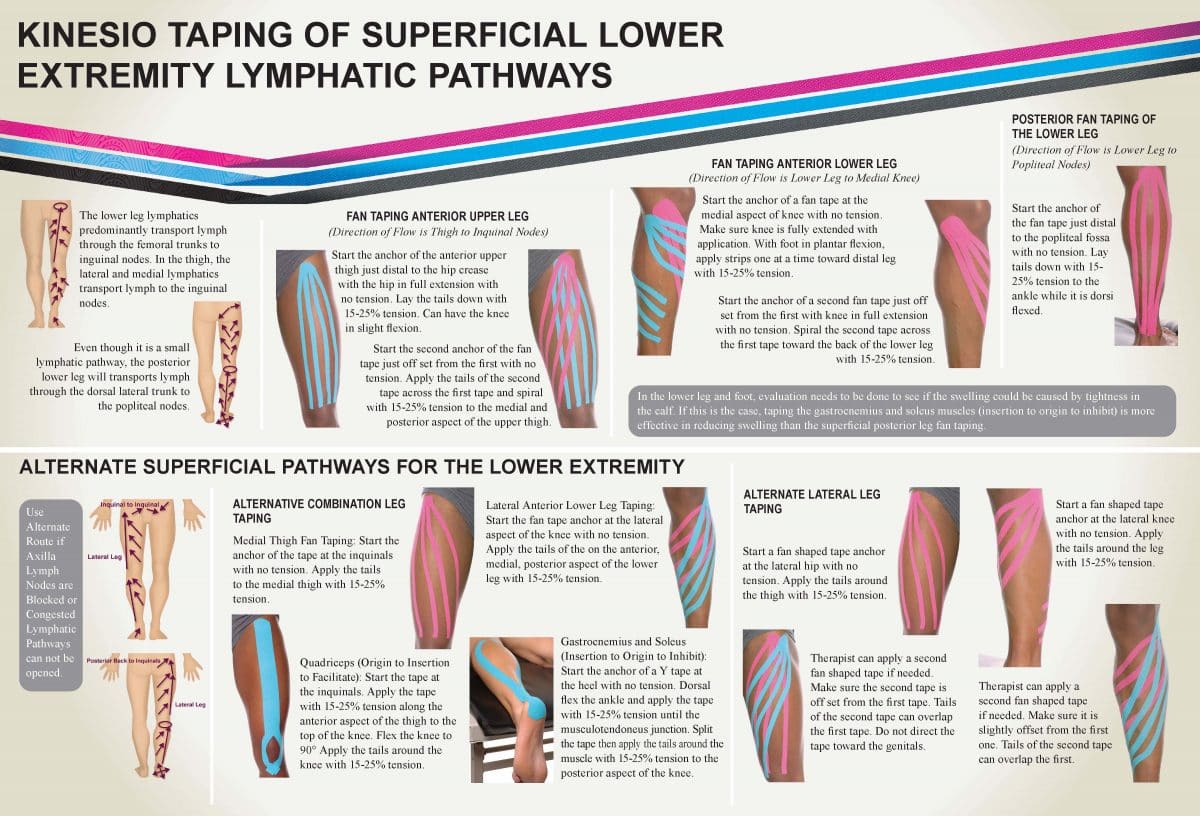
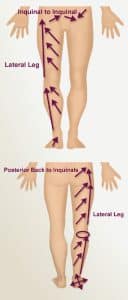
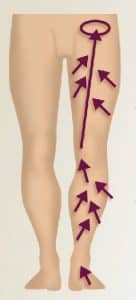
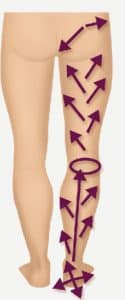
Even though it is a small lymphatic pathway, the posterior lower leg will transports lymph through the dorsal lateral trunk to the popliteal nodes.
Use Alternate Route if Axilla Lymph Nodes are Blocked or Congested Lymphatic Pathways can not be opened.
FAN TAPING ANTERIOR UPPER LEG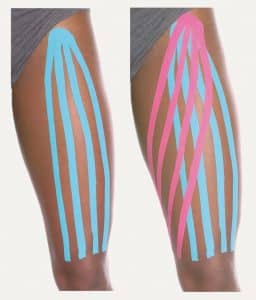
(Direction of Flow is Thigh to Inquinal Nodes)
Start the anchor of the anterior upper thigh just distal to the hip crease with the hip in full extension with no tension. Lay the tails down with 15-25% tension. Can have the knee in slight flexion.
Start the second anchor of the fan tape just off set from the first with no tension. Apply the tails of the second tape across the first tape and spiral with 15-25% tension to the medial and posterior aspect of the upper thigh.
FAN TAPING ANTERIOR LOWER LEG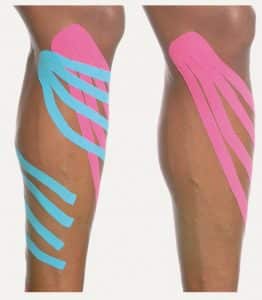
(Direction of Flow is Lower Leg to Medial Knee)
Start the anchor of a fan tape at the medial aspect of knee with no tension. Make sure knee is fully extended with application. With foot in plantar flexion, apply strips one at a time toward distal leg with 15-25% tension.
Start the anchor of a second fan tape just off set from the first with knee in full extension with no tension. Spiral the second tape across the first tape toward the back of the lower leg with 15-25% tension.
POSTERIOR FAN TAPING OF THE LOWER LEG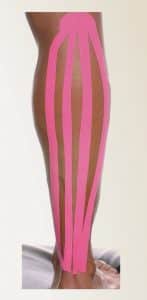
(Direction of Flow is Lower Leg to Popliteal Nodes)
Start the anchor of the fan tape just distal to the popliteal fossa with no tension. Lay tails down with 15-25% tension to the ankle while it is dorsi flexed.
In the lower leg and foot, evaluation needs to be done to see if the swelling could be caused by tightness in the calf. If this is the case, taping the gastrocnemius and soleus muscles (insertion to origin to inhibit) is more effective in reducing swelling than the superficial posterior leg fan taping.
ALTERNATE SUPERFICIAL PATHWAYS FOR THE LOWER EXTREMITY
ALTERNATIVE COMBINATION LEG TAPING
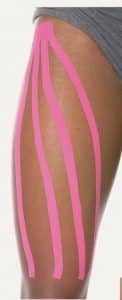
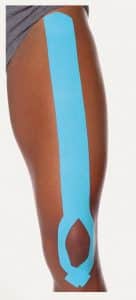

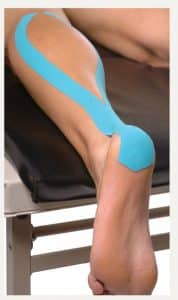
ALTERNATE LATERAL LEG TAPING
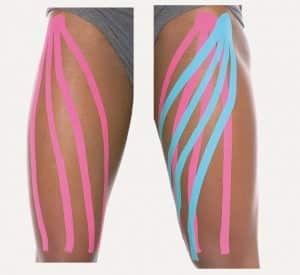
Therapist can apply a second fan shaped tape if needed. Make sure the second tape is off set from the first tape. Tails of the second tape can overlap the first tape. Do not direct the tape toward the genitals.
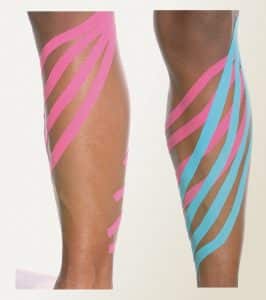
Therapist can apply a second fan shaped tape if needed. Make sure it is slightly offset from the first one. Tails of the second tape can overlap the first.
Recommended Tape
Kinesio Fan Cut




